Ryan Hall's Blog, page 157
June 20, 2017
Ajee Wilson Stripped Of American Record Due To Tainted Beef
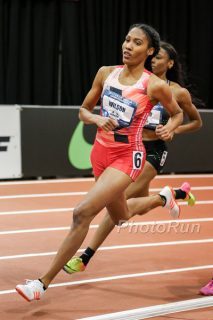
Photo: Photorun.net
Yes, you read that headline right. After winning the 800-meter—with a 1:58.27 American record which previously was 1:58.71—at the Millrose Games in February, Ajee Wilson tested positive for banned substance zeranol. The kicker? She ingested the substance after eating tainted beef, according to USADA.
Because of this, FloTrack reports that USADA is not suspending Wilson, but is stripping her result.
“Though anti-doping agencies including USADA typically apply a standard of ‘strict liability,’ meaning that athletes are fully accountable for whatever is in their system, they found that in this case, ‘Wilson ingested [zeranol] without fault or negligence,'” explains FloTrack.
Prior to the Games, it is reported that Wilson tested negative for the substance and when her test came back positive a week later, the amount of zeronal was so small that it was highly unlikely it came from anything other than tainted meat. Thus, USADA decided to give her a ‘light punishment.’
Because she is not suspended from competition, Wilson is entered to race in the USATF Outdoor Championships this week in Sacramento, Calif., and will be running to earn a bid to the IAAF World Championships in London.
RELATED: Many Athletes Could Lose World Records Under New Guidelines
The post Ajee Wilson Stripped Of American Record Due To Tainted Beef appeared first on Competitor.com.
June 19, 2017
New U.S. Marathons and Halfs Report Reveals Participation is Declining
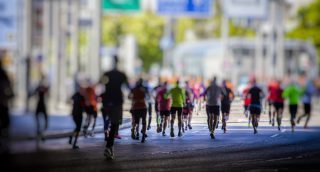
Running USA has released their annual marathon and half marathon reports for 2016, offering statistics and finisher insights for each distance. For the second year in a row, participation has declined in both events, down from a record high in 2014.
Last year, 507,600 people completed 26.2 miles in the United States. Among those participants, women made up 44 percent of marathon finishers in 2016, showing no change from the 2015 report. Meanwhile the half marathon continues to be one of the most popular races in the U.S. Even with a drop in participation, 1.9 million people still finished the distance. Women made up the majority of finishers in 2016, holding steady at 60 percent—the same percentage as 2015.
Biggest Marathons and Half Marathons
Once again, the TCS New York City Marathon was the largest marathon in the United States, with over 51,000 finishers. Following NYC was the Bank of America Chicago Marathon with over 40,000 participants. The Boston Marathon was the third largest, with over 26,000 finishers. Overall, 86 marathons had over 1,000 finishers—down from 90 in 2015.
The Airbnb Brooklyn Half Marathon topped the finisher list for 13.1-milers, with over 27,000 people taking part in the course that goes from Prospect Park to Coney Island. Among the top 15 races, four were runDisney events and four others were part of the Rock ‘n’ Roll race series. Amazingly, 31 half marathons had over 10,000 finishers.
Average Times Slowing Down
Average finishing times for both the marathon and half marathon slowed this year. Men had an average median marathon time of 4:22:07, while women ran a median time of 4:47:40. Both of these were the slowest median finishing times since 2005. For the half marathon, average median finishing time was 2:05:15 for males and 2:23:48 for females.
RELATED: 25 Iconic American Road Races
Speediest Races
To find the fastest marathoners, though, it’s no surprise that you should head to Boston. 63 percent of finishers ran from Hopkinton to Boylston in under 4 hours. The Philadelphia Marathon was a distant second at 39 percent, followed by the Medtronic Twin Cities Marathon at 31 percent.
The fastest half marathons last year were run in New York. Both the Airbnb Brooklyn Half Marathon and the NYC Half saw 45 percent of their finishers complete those races in under 2 hours. Rock ‘n’ Roll Brooklyn was third, with 31 percent finishing sub-2, proving that fast runners love the city that never sleeps.
Age of Finishers
One statistic that didn’t change was the median age of marathon finishers. While the average age for males was 40, women stayed slightly younger at 37 years old. And for the second year in a row, masters runners made up the majority of marathon finishers. 50 percent of finishers fell into the 40 or older category.
The average age of half marathon finishers has barely changed as well. Similar to the marathon, the median age for male finishers was 39.4, while the median age for female finishers was 36.6. Unlike the marathon, though, open runners still held the majority of finisher spots for the half. 52 percent of participants were between 20-29 years old, while 44 percent fell into the Masters category.
For more information on this year’s studies, visit runningusa.org.
RELATED: What Racing Trends are Showing Us About the Future of Running
The post New U.S. Marathons and Halfs Report Reveals Participation is Declining appeared first on Competitor.com.
Why You Should Stretch After Your Run And Not Before

Static stretching used to be the prescription for every exercise class in every grade. However it’s been shown that stretching muscles before running without dynamic movement is not a great thing. Here’s why you should refrain from performing static stretches before running.
Why you should not static stretch before running
You’re not warmed up yet.
Cold muscles are tight muscles. Warming up your muscles first means you’ll be better able to complete any stretch.
You’re likely to pull a muscle.
Runners are more likely to get a strain in tight, cold muscles, especially if you go too far into a stretch. That’s because cold muscles are more likely to be torn or pulled.
You’ll run slower.
Studies have shown that those who use static stretching before a hard workout are more likely to perform at a lesser level than those who don’t stretch before.
RELATED: Dynamic Stretching Versus Static Stretching
Why you should static stretch after running
You’ll improve your range of motion.
Stretching after you run will help with flexibility. Warm muscles are more pliable, and you’ll find you can reach further than when your muscles are cold. However, be careful that you don’t overstretch.
It will feel great.
Stretching out your hamstrings, quads and hips after a long run can feel amazing. You will immediately feel a sense of relief and get that “ahhh” moment.
RELATED: Dynamic Warmups To Make You Stronger And Faster
If you want to warm up before you run, consider walking for 5-10 minutes. Better yet, perform dynamic stretching exercises, which involve movements that better help prepare your joints and muscles for your upcoming workout. Examples of dynamic stretches include leg swings, lunges, high kicks, knee to chest, butt kicks and more. You can also use a foam roller before you hit the pavement.
There’s still controversy about whether runners need to stretch at all—before or after a run. So do your research and do what feels right to you.
The post Why You Should Stretch After Your Run And Not Before appeared first on Competitor.com.
Esther Atkins Adds Miles to Queens 10K with Runs To and From Airport

Photo: Courtesy of NYRR
 Photo: Courtesy of NYRR
Photo: Courtesy of NYRR
Catching a cab in New York on a weekend (or weekday) can be a hassle. So in the spirit of the NYRR Queens 10K race on Saturday, third-place finisher Esther Atkins decided to forgo traditional transportation for her whirlwind trip and use the mode that best suits her.
Her legs, obviously.
Arriving at LaGuardia Airport Friday afternoon, Atkins jogged from the airport to her Airbnb (about 1.25 miles) and then race morning on Saturday she checked out and ran from her lodging to the start of the Queens 10K—about 1.5 miles.

A screenshot of Esther Atkins’ 1.5-mile run from her Airbnb to the start of the NYRR Queens 10K race.
The race started at 7:45 a.m. and her flight left at 10:29 a.m. She crunched the numbers and knew she could accomplish everything on foot.
She posted a 35:33 to finish behind Belaynesh Fikadu (34:13, Bronx, N.Y.) and Roberta Groner (34:19, Philadelphia). Then she collected her bag from “someone trustworthy” and jogged to LaGuardia, arriving at 8:41 a.m.

The NYRR Queens 10K course.
“I knew that with a 7:45 a.m. start I would finish around 8:20—and I did—and that the run (to the airport) would be less than three miles,” Atkins said in an email. “… I was within the property of LaGuardia by 8:41, hoped on the shuttle, went into (the terminal) and got changed and washed my face in the nearest bathroom.”
However, Atkins has some unexpected extra time. She was through security at 9:20 a.m. only to find that her flight was delayed.

Atkins’ run from the Queens 10K finish line to the LaGuardia Airport.
“I have come to see all of my trips to New York City as a fun puzzle,” she says. “But this was definitely the riskiest, yet most efficient NYC trip puzzle ever.”
With a quick flight check, next time she might be able to add on a few extra miles.
You can see the full race results from the Queens 10K here.
The post Esther Atkins Adds Miles to Queens 10K with Runs To and From Airport appeared first on Competitor.com.
Q&A with the Veteran Who Went Viral For His 2017 Boston Marathon Finish
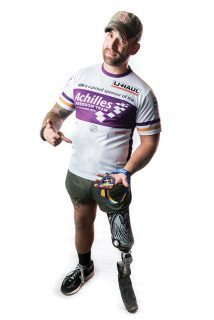
Photo: Lynsey Noel Photography
A former staff sergeant in the Army, Earl Granville, 33, now works for two nonprofits that help disabled veterans live an active lifestyle: Operation Enduring Warrior and Oscar Mike. He’s also a public speaker, helping others find their purpose in life and those who are battling mental adversity. Granville, who lives in Scranton, Pa., races with the Achilles Freedom Team as an athlete—because the four-time Boston Marathon finisher lost his leg in 2008 from an IED blast in Afghanistan. He credits Achilles Freedom Team with making it possible for him to run, and it’s also how he met his guide, Andi Piscopo, in 2014. After almost nine hours on course during the 2017 Boston Marathon, Granville inadvertently created the enduring viral image of the race when he carried Piscopo and the American flag across the finish line.
Was the dramatic finish at the Boston Marathon something you planned?
There was a little chatter and joking about carrying her across the line during the race. I had to stop at a few medical tents because I kept cramping. I told her I didn’t want to quit even if it meant walking. Once we turned onto Boylston Street, I knew I had to run despite the pain. In the heat of the moment, I picked her up and carried her across the line.
What’s all the attention been like since you finished?
Overwhelming. I had no idea the race was still being televised. I’ve decided to use the attention to spread my voice and ideas of battling mental adversity and bring awareness the best I can. I hope people see it and get inspired and spread the inspiration to others.
Why have you turned to running as an amputee?
Some of it was for me to find my purpose again. Another thing that motivated me was hearing that my brother was proud of me. I decided to challenge myself more. I hand-biked the New York City Marathon in 2010 and Boston in 2014, 2015 and 2016. I’ve done 5Ks, 10Ks and a half marathon. After I hand-biked Boston in 2016, I waited at the finish line for two of my buddies on the Achilles Freedom Team. They both ran and are both amputees. I never thought I could run a marathon. Watching them was my inspiration to do it.
What’s it like learning to run with a prosthetic leg?
There’s a lot of trial and error. My other leg is full of hardware due to the blast too. It was salvaged, but will never be 100 percent. You have to figure out what the best prosthetic is for you. You get nervous. You fall. But what do you do when you fall? You keep on going. You master it.
What role has exercise played in helping you battle your demons?
I feel like what I was struggling with wasn’t just traumatic stress; it was mental adversity. Two and a half years after I lost my leg, my twin brother, Joe, who was also in the Army, committed suicide. That’s when my downward spiral hit. I learned that Joe was very proud of how active I’d been since my injury with things like snowboarding and ice sled hockey. So I started doing more physical challenges in honor of my brother. I eventually realized I wasn’t doing them for Joe. I was doing them for me. I found my new purpose in life.
Mental recovery can be as challenging, if not more so, than physical recovery. What was your experience like?
In our life we’re going to deal with adversity, loss of loved ones, broken hearts, stress, anxiety, depression. That heavy weight can hold us down. When I left the military, I lost my purpose. I found a new one as a public speaker and helping others find their purpose. Once you find it, make that purpose your passion. Your purpose may be your employment to pay bills and provide for your family; your passion is what you wake up to do for you. The two shifts people have to make to go down a more positive path are changing their attitude and stepping out of their comfort zone.
The post Q&A with the Veteran Who Went Viral For His 2017 Boston Marathon Finish appeared first on Competitor.com.
Western States Adds Drug Testing Protocol To 2017 Race
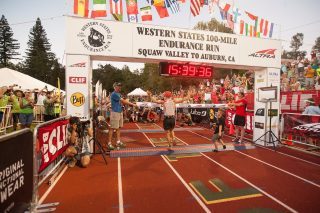
This upcoming weekend, runners will take off on the 44th edition of the Western States Endurance Run (WSER). And for the first time in its history, the world’s oldest and most prestigious 100-mile trail run will be enforcing new drug testing policy protocol on those runners.
The drug testing will take place post-competition and will be handled by an independent third-party drug testing administrator using urine sample protocols in accordance with World Anti-Doping Agency (WADA) rules and regulations. All runners on the final start list could be subject to drug testing, which will be conducted immediately following competition.
Runners selected will be notified by officials as they finish the race and will head to a secure area near the finish line at Placer High School in Auburn, Calif.
“Drug testing at this year’s Western States is an important and necessary step in deterring use of performance-enhancing drugs in our sport,” Medinger said in a press release issued on behalf of the Run’s Board of Trustees, who earlier this year voted unanimously to implement drug testing in 2017. “We are hoping that by taking a leadership role regarding this important issue, other races throughout the world will also make a strong commitment and take a strong stance toward fostering a drug-free future for our sport.”
You can read the WSER full drug testing policy and protocols document here.
RELATED: Western States Endurance Run Announces Zero-Tolerance Doping Policy
The post Western States Adds Drug Testing Protocol To 2017 Race appeared first on Competitor.com.
What To Do When Your Running Shoe Is Discontinued
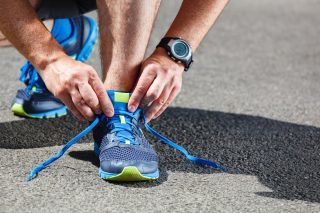
If you’ve been running long enough, you have probably experienced this common problem. Just when you find the perfect running shoe—the one that feels like you are skipping on clouds, makes you run like the wind and thrillingly touches your “sole”—the shoe gets discontinued.
After going through the proper stages of grieving, it is time to find acceptance and move on. How does one do this after such a tragic loss? Simply follow these easy steps:
1. Cry.
2. Momentarily consider barefoot running.
3. Immediately visit all online stores that carry your shoe (yes, all 1,002 of them) and stockpile pairs in your size. Check eBay as well. However, this is a temporary solution. Eventually you are going to run out of options and move on to a new shoe model.
4. Once you have exhausted all online options, email the shoe company that has discontinued your shoes. Try not to use foul language as you kindly ask them to reinstate your shoe. When they tell you “no,” take a breath and ask them to recommend a shoe that is similar to the one that has been discontinued.
5. As an outlet of expression, write an open letter to the company that discontinued your shoes. Let it all out and share memories of your time with your shoes. Expose your anger and disappointment. Obviously you do not have to send the letter if you don’t want to. This is a therapeutic exercise and one that solely exists to help you to cope and move on.
6. If all else fails, stop running altogether. Take up a sport such as swimming where you don’t need shoes and will never run the risk of encountering this type of loss again.
7. If you have had no luck with the aforementioned options, visit your local running store. Tell them your sob story and then let them know what you loved about your previous shoes. The experts at a running store can help to find a shoe that might work for you. Because these people actually know what they are talking about.
8. It is true that “losing” your favorite shoe at the whim of a company is upsetting. You need to know, however, that you will eventually discover a new shoe that works for you. Losing something you hold so dearly forces you to branch out and expand your horizons. Change encourages flexibility, open-mindedness and progress. As an unknown poet once said, “Don’t be afraid of change. You might lose something good, but you’ll gain something better.”
RELATED: How to Buy Your Next Pair of Running Shoes
The post What To Do When Your Running Shoe Is Discontinued appeared first on Competitor.com.
Teen Tragically Killed By Black Bear During Alaskan Trail Race

A 16-year-old runner was killed when participating in the juniors division of the Robert Spurr Memorial Hill Climb in Alaska this weekend.
According to the Alaska Dispatch News, a park ranger shot the bear in the face, but it ran away.
“Rangers and the Alaska Department of Fish and Game were still looking for the animal Sunday night on the slope overlooking Turnagain Arm southeast of Anchorage.”
The teen was said to be halfway through the race when he texted a relative that he was being chased by a bear. That relative, who was at the finish line, let race officials see the communication and a search was launched by race director Brad Precosky.
The paper further reports, “The family member had GPS coordinates from the missing runner’s phone that helped guide searchers to the area where his phone was.”
Searchers and runners that were part of the race, couldn’t get close, however, as the bear remained in the area near the teen’s body.
The report continues: “The runner was found about a mile from the trailhead about 500 yards off the trail in steep, heavily wooded terrain at about a 30-degree slope, Crockett [a park ranger with Chugach State Park] said. It was not clear how the runner got off the trail, or if he had been chased by the bear to the spot.”
It is reported that bear sightings are uncommon in the area and until further notice, the Bird Ridge trailhead and parking lot are closed as officials continue their search for the bear.
RELATED: Maine Woman Fights Off, Kills Rabid Raccoon While on Trail Run
The post Teen Tragically Killed By Black Bear During Alaskan Trail Race appeared first on Competitor.com.
June 18, 2017
Photos From 2017 Rock ‘n’ Roll Seattle and Its New Stadium to Stadium Course
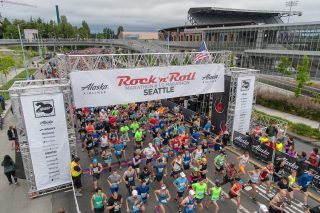
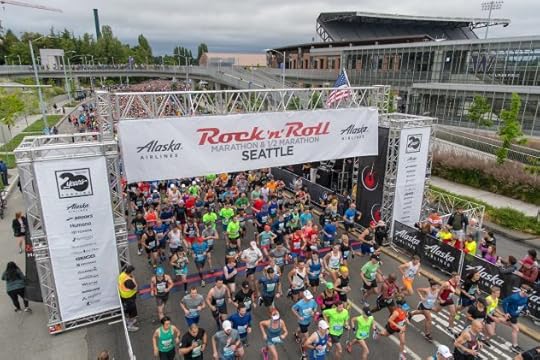



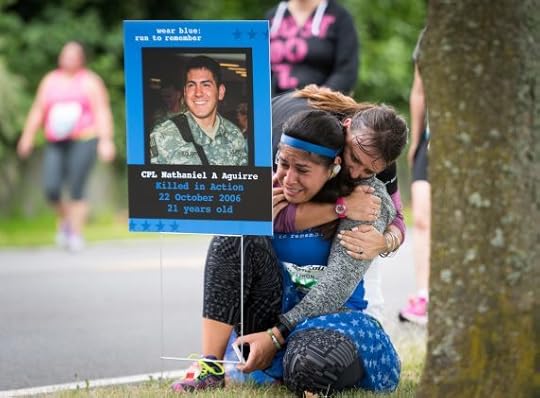

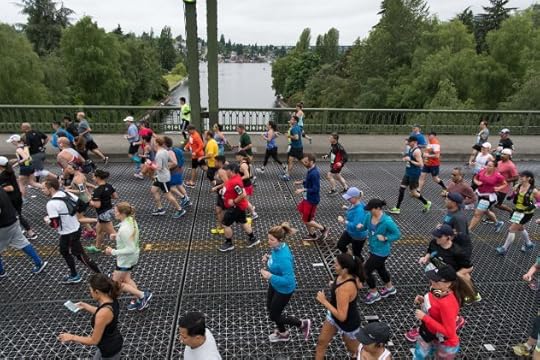
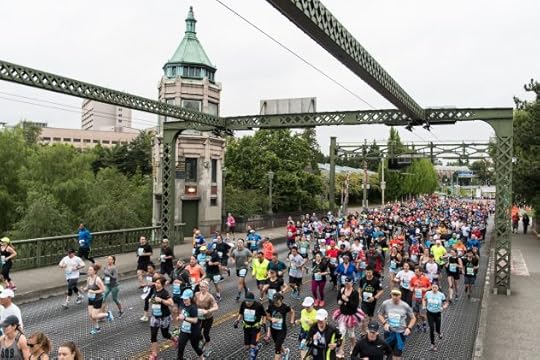
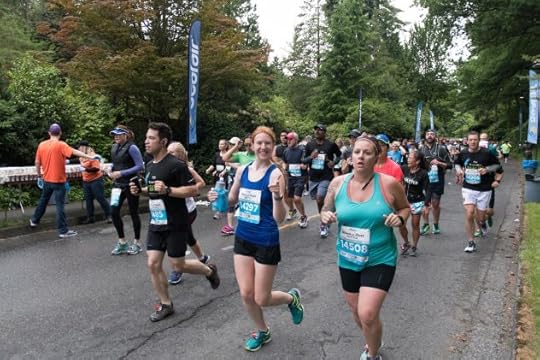
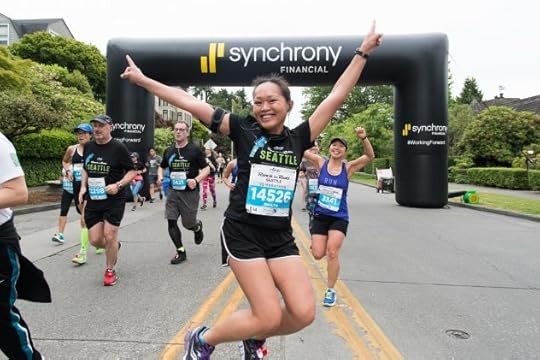
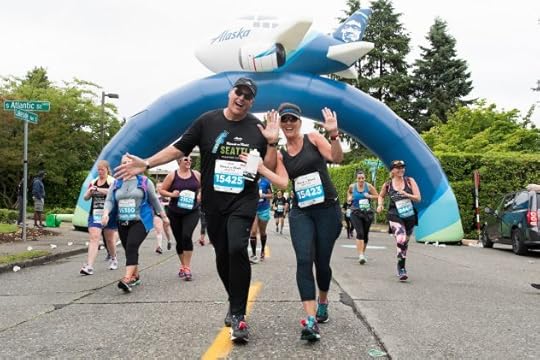

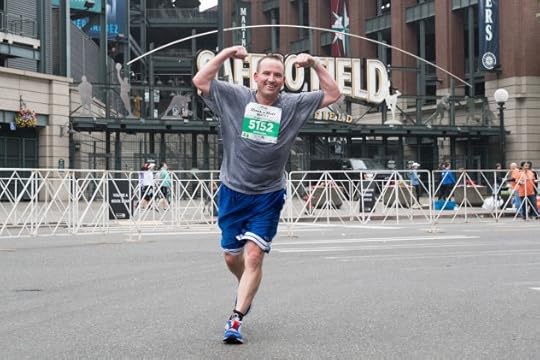
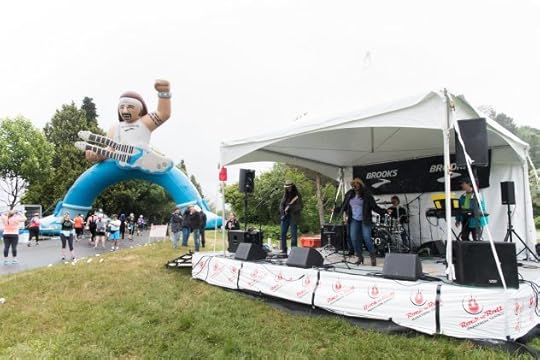
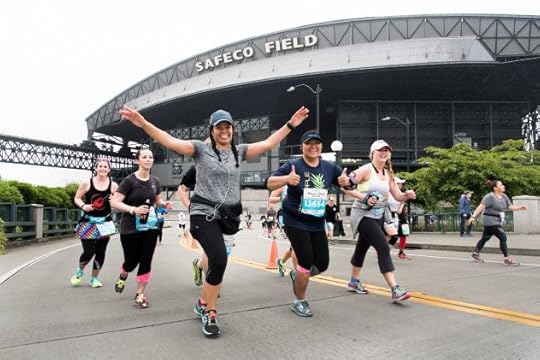
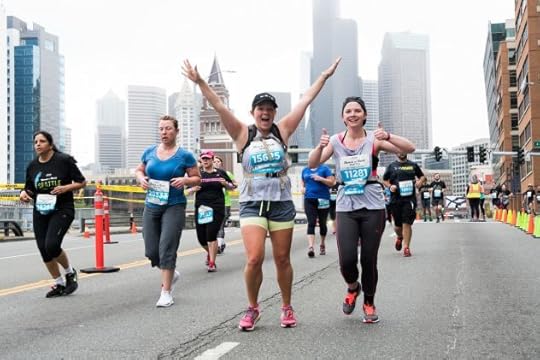
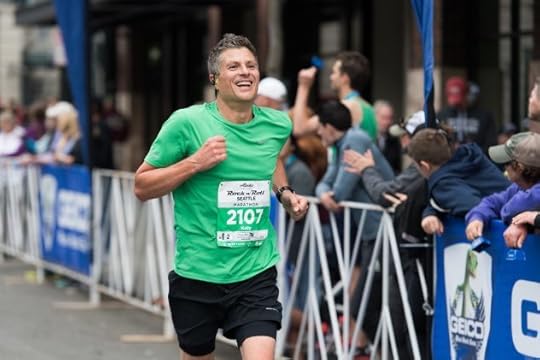
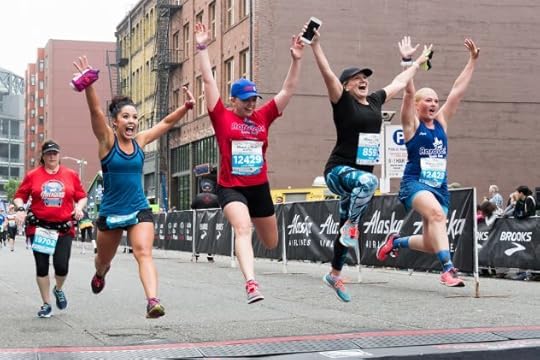
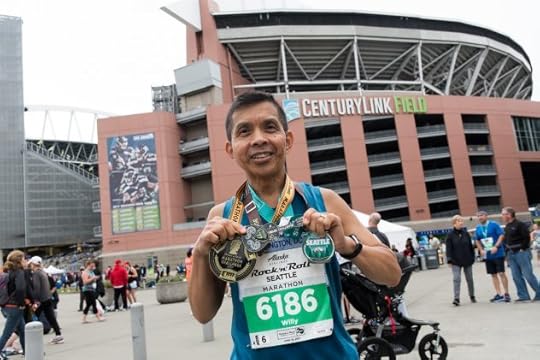

Photos courtesy of Rod Mar
More than 18,000 runners from all 50 states and 30 countries toed the start line at the annual Alaska Airlines Rock ‘n’ Roll Seattle Marathon & ½ Marathon on Sunday. The race, which is in its 9th year, debuted a new stadium to stadium course starting at Alaska Airlines Field at Husky Stadium and finishing at CenturyLink Field. Tibebu Proctor won the men’s half marathon and Jennifer Bergman placed first in the women’s half marathon. Blake Hilty and Shelby Mills finished first in the men’s and women’s half marathon, respectively. Upon finishing, all runners celebrated with family and friends at the finish line festival where Mayer Hawthorne took the stage to headline the post-race Toyota Rock ‘n’ Roll Concert Series.
RELATED: Rock ‘n’ Roll Seattle Kicked Off Marathon Weekend with Inaugural 5K
The post Photos From 2017 Rock ‘n’ Roll Seattle and Its New Stadium to Stadium Course appeared first on Competitor.com.
Alaska Airlines Rock ‘n’ Roll Seattle Marathon & ½ Marathon Debuted New Stadium to Stadium Course
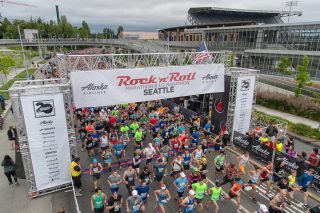




















More than 18,000 runners from all 50 states and 30 countries toed the start line at the annual Alaska Airlines Rock ‘n’ Roll Seattle Marathon & ½ Marathon on Sunday. The race, which is in its 9th year, debuted a new stadium to stadium course starting at Alaska Airlines Field at Husky Stadium and finishing at CenturyLink Field. Tibebu Proctor won the men’s half marathon and Jennifer Bergman placed first in the women’s half marathon. Blake Hilty and Shelby Mills finished first in the men’s and women’s half marathon, respectively. Upon finishing, all runners celebrated with family and friends at the finish line festival where Mayer Hawthorne took the stage to headline the post-race Toyota Rock ‘n’ Roll Concert Series.
Photos courtesy of Rod Mar
The post Alaska Airlines Rock ‘n’ Roll Seattle Marathon & ½ Marathon Debuted New Stadium to Stadium Course appeared first on Competitor.com.
Ryan Hall's Blog
- Ryan Hall's profile
- 21 followers



